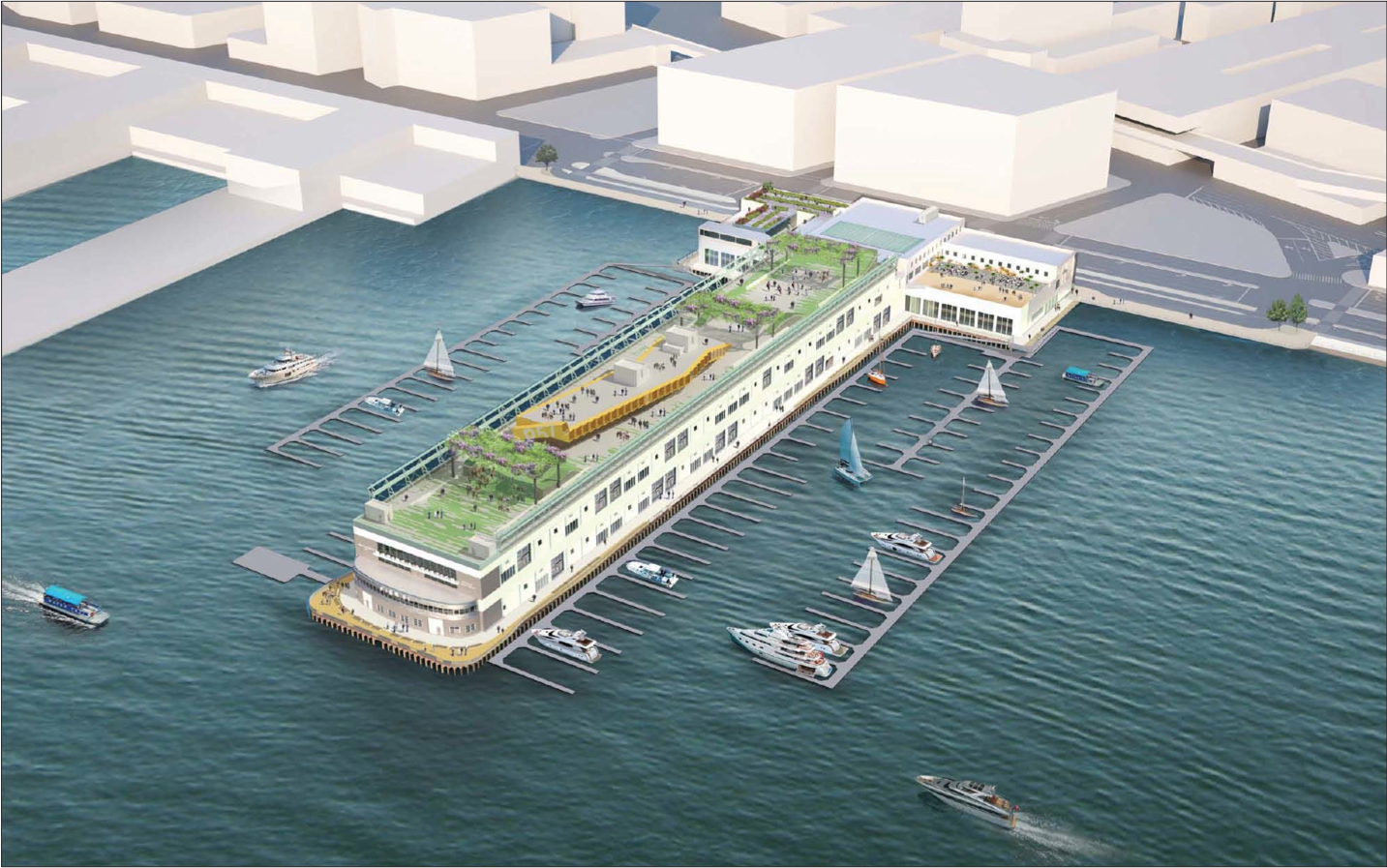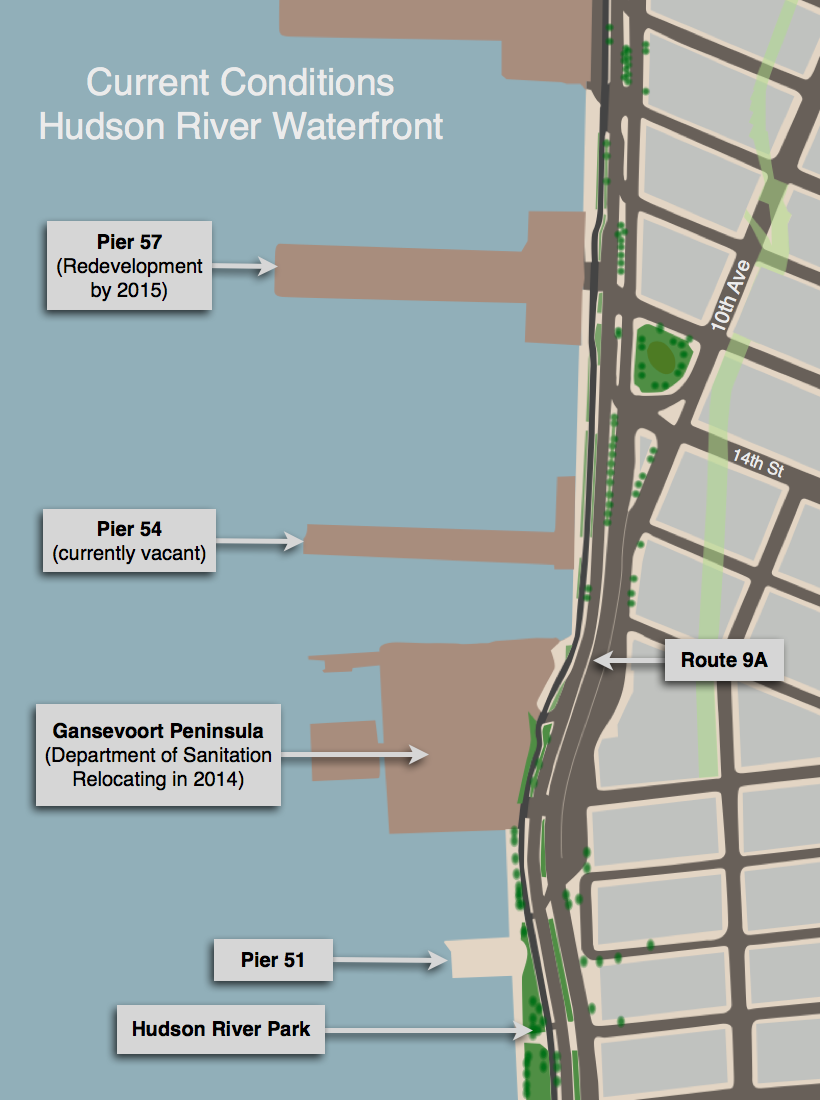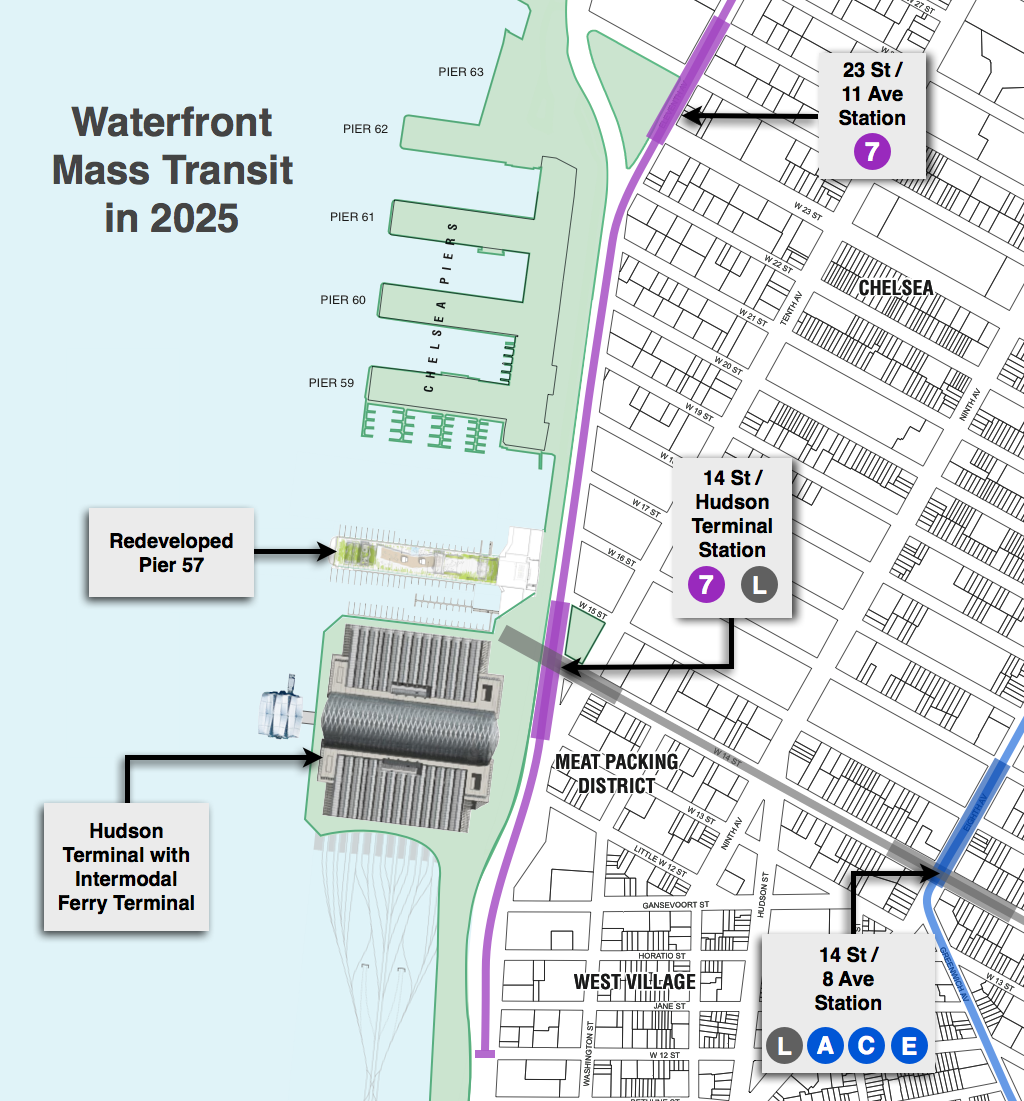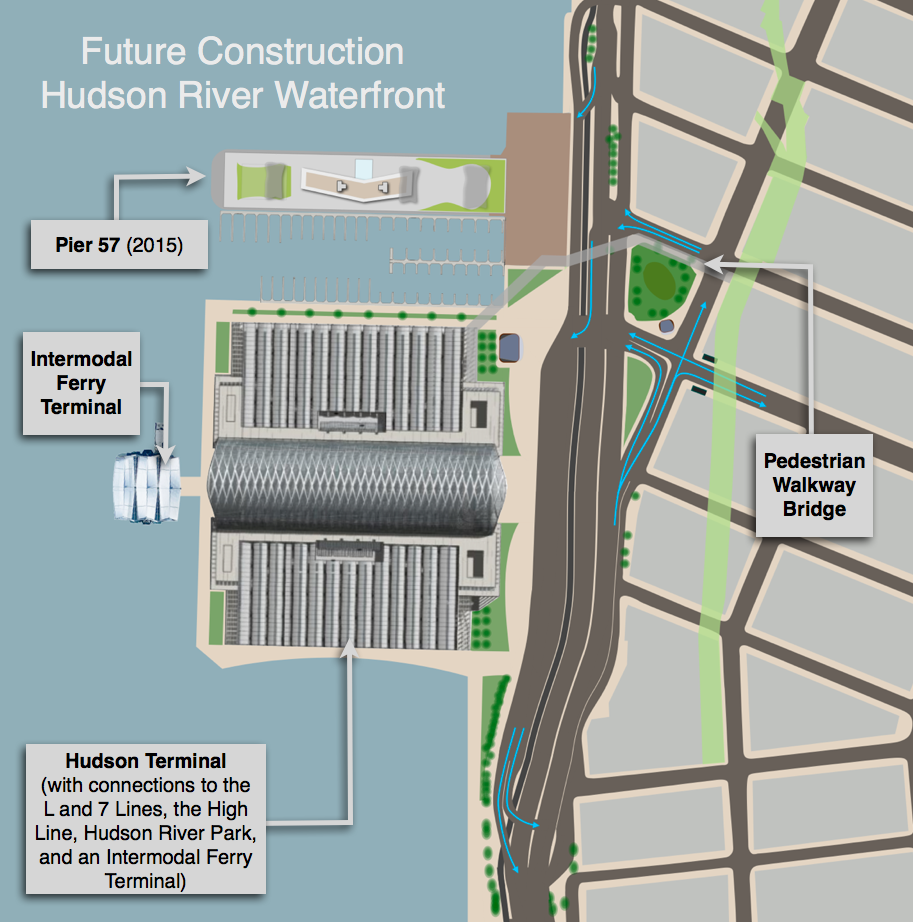Pier 57, Hudson River Park, and the Hudson Terminal Plan
The historic Pier 57, located on the Hudson River between 15th and 16th Streets, was reconstructed from 1950 to 1954 on floating concrete caissons following a fire in the original structure. Between 1967 and 2003, Pier 57 was used as a bus garage and maintenance facility by the Manhattan and Bronx Surface Transportation Operating Authority and later the MTA. The pier has been vacant since 2004, and soon after, proposals for its future use began appearing from a number of prospective developers.
The Hudson River Park Trust, who is charged by the city and state with operating and developing Hudson River Park, selected Young Woo & Associates to privately develop Pier 57. The winning plan suggests renovating Pier 57 into a shopping, cultural, educational, and entertainment destination with 2.5 acres of landscaped public rooftop. Pier 57’s reconstruction is slated for completion by 2015.
Directly below Pier 57 is the abandoned Pier 54, which was demolished in 1991. There are no long-term plans for Pier 54’s redevelopment, and it is currently used as an open-air facility for a variety of event types. Below Pier 54 is the Gansevoort Peninsula, which currently houses the Bloomfield Street Sanitation Depot. The NYC Department of Sanitation plans on relocating the depot in 2014, and the Hudson River Park Trust has suggested demolishing the existing structure to allow for construction of an open-space park on the peninsula.
The construction of Hudson Terminal below a redeveloped Pier 57 will provide Hudson River Park visitors direct access to mass transit lines for the first time in the park’s history. As illustrated above, Phase I of the Hudson Terminal Plan proposes extending the 7 Line south to 14th Street along 11th Avenue and Route 9A to meet with a westward expansion of the L Line at Hudson Terminal. In addition, Hudson Terminal will utilize the only intermodal ferry terminal on the Manhattan side of the Hudson River, providing direct ferry-to-train access. RealTransit proposes expanding Hudson River Park in the vicinity of Hudson Terminal to enlarge pedestrian walkways and develop new green spaces to greatly improve park access in between Chelsea Piers and Pier 51, which has remained a noticeable gap in the five-mile Hudson River Park.
As part of the redevelopment of the area surrounding Pier 57, the Hudson River Park Trust has proposed changes to the service road and bike path bordering Route 9A (West St) to improve vehicle access to the pier, including new entrances along Route 9A at 16th and 17th Streets. In addition to these changes, and as illustrated above, this service road will extend southward to Hudson Terminal, widening at 14th Street to accommodate pick-up and drop-off vehicle traffic. The southern end of the service road will split to southbound and northbound exits onto Route 9A around Horatio Street. Vehicles traveling northbound on Route 9A from points south of Hudson Terminal are able to enter the service road via an exit onto 10th Avenue and loop at 14th Street. In order to ensure that north-south traffic is able to flow continuously, there will be no northbound left turns onto the service road.
In addition to vehicle traffic, the new 14th Street-Hudson Terminal subway station serving the 7 and L lines will have its primary street entrance on the northeast corner of the Hudson Terminal plaza. Additional entrances will be located within 14th Street park and at the intersection of 14th Street and 10th Avenue. To allow for further separation of pedestrians from vehicles, a pedestrian walkway bridge will be constructed to connect Hudson Terminal and Pier 57 with 14th Street Park and High Line Park. With the completion of the Hudson Yards commercial district in the upcoming years, NJ Transit commuters will be able to walk to work from Hudson Terminal to their destination along the High Line without interruption from traffic lights or vehicles.
The redevelopment of Pier 57 strengthens the West Chelsea and Meatpacking District neighborhoods, helping to unify Hudson River Park and return the waterfront to the public. By integrating the waterfront, mass transit connections, Hudson River Park, and High Line Park, Hudson Terminal will serve as an attractive, yet highly functional gateway for those traveling to and from New York City.







